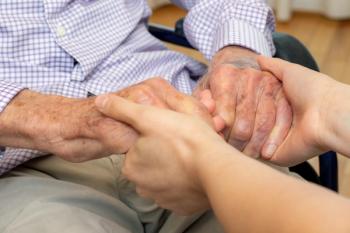
How Wearable Tech Data Can Help Improve Biological Age
Wearable data can be a cost-efficient way for people to gain insights about how their lifestyle affects their biological age.
Data from wearable devices offer a way for people and physicians to track aging and the risk of future disease, according to
While other biomarkers of aging exist, like DNA methylation, researchers from Gero and Roswell Park Comprehensive Cancer Center conducted a systematic evaluation and found that wearable devices can be a feasible and cheaper option than getting blood drawn when it comes to tracking aging and potential diseases, Peter Fedichev, founder and chief science officer of Gero, told Healthcare Analytics News™.
An artificial intelligence (AI) algorithm was trained to find patterns in everyday changes of physical activity to estimate a person’s biological age.
>>
Fedichev and his research team looked at the relationship between physical activity and signs of weakness, morbidity and mortality risks.
The AI analyzed more than 107,000 human physical activity records from the 2003-2006 National Health and Nutrition Examination Survey and UK Biobank databases. The databases hold digital activity records from wearable technology, lifestyle and health information and death records up to nine years following the activity monitoring.
For each person, a week-long activity track was collected.
People who engage in more risky behaviors, like smoking, can have a decrease in physical activity, a change in eating habits and an increased risk of developing a disease. All of these factors can lead to a smoker’s biological age increasing, and wearable technology can measure them.
If a person stops smoking though, it is possible to reverse the aging, if discovered before serious age-related disease manifestation.
The technology allows a person to monitor their biological age in a more cost-efficient way and without interrupting their life.
While this evaluation to see the feasibility of wearable technology is just the first step, Fedichev told us that in principle, systems could be able to start advising people on what they can do to improve their biological age. Whether a person needs to eat more or less, exercise more or not smoke, wearable technology and AI could be used to tailor interventions for specific needs.
“Consider this a first step,” Fedichev said. “If you can measure something you can test future interventions and then make more informed decisions about lifestyles.”
Through measuring lifestyle choices in people with and without disease, it is possible for a person to change their lifestyle, postpone a potential disease and extend life, Fedichev said.
“This is very promising research that opens the opportunity to assess health status from wearable devices,”
Mitniski added that the research could have practical implications to individual and public health issues.
Based on the findings, a mobile app called Gero Healthspan was created that offers real-time monitoring of biological aging changes in response to how lifestyle interventions like diets, activities and supplements affect life expectancy.
Get the best insights in healthcare analytics
Related








































